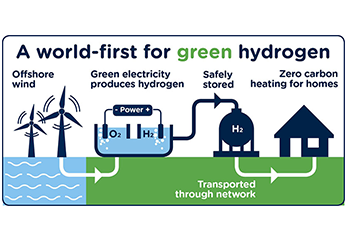We’re marking six years since we launched the pioneering CISBOT robotic system in the UK, which enables us to upgrade live gas mains from the inside.
Back in 2013, we were the first gas network company in the UK to implement the Cast Iron Joint Sealing Robot (CISBOT) after adapting technology developed by US-based energy research and development firm ULC Robotics. On 17 October 2013, we successfully trialled the CISBOT robot to seal a lead yarn joint on a live gas main for the first time in Dartford, Kent.
Since then, CISBOT has travelled through 44 kilometres of our gas pipes and upgraded more than 12,000 joints. The robot has been used to minimise disruption to motorists and pedestrians in some of Britain’s most iconic and traffic-sensitive roads including Clapham Common North Side (A3) in South London, George Street in Edinburgh and Kingsway/King’s Road along Brighton seafront. We’re currently using CISBOT to upgrade our aging pipes in Nightingale Lane in Clapham and St Philip’s Avenue in Eastbourne.
The robot works inside the live pipe, so there’s no need to interrupt supplies to homes and businesses while we upgrade our gas main. CISBOT can travel up to 426 metres underground from a single excavation, which means we don’t require long trenches in the road to access our pipe.
The robot can collapse to a very small size, so it can be inserted into the gas main through a small hole drilled into the pipe. Once the robot is inside the gas main, the robot’s operator uses the on-board camera and controls to precisely position the robot over the joints and then injects the joint with a special sealant.
The system is controlled from the rear of a single box truck, which houses monitoring screens showing the robot’s activities, the robot’s tether reel, control system and maintenance area. With the majority of the activity taking place underground, our CISBOT projects are also considerably quieter than conventional mains replacement techniques, further minimising disruption for local residents.
Our Head of Innovation John Richardson said: “Using CISBOT technology over the past six years has really revolutionised roadworks. Robotic technology reduces the need for multiple excavations and trenches, reduces disruption on the roads and saves time and money, which is excellent news for motorists, our customers and the local community.”
John added: “It’s not just us embracing CISBOT’s potential, our project partners ULC Robotics are now working with the UK’s other gas distribution companies to roll out this award-winning technology in other areas. Thanks to Ofgem’s Network Innovation Allowance, we’ve been able to share the success of our pioneering technology with other gas network companies to allow more motorists across the UK to benefit from less disruption.”
Graeme Cleeton, VP UK Operations at ULC Robotics, commented: “Over the last six years, SGN have become our industry partner for innovation and new technology. Through a variety of innovation-funded projects we have built up a strong trusting relationship with SGN. SGN’s ability to trial CISBOT under NIA, commercialise the technology into business as usual, rapidly scale up their deployment, and share the learning with other gas networks has helped create a solid foundation for ULC Robotics within the UK.”


